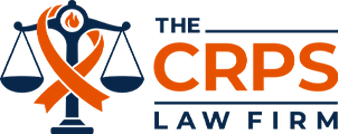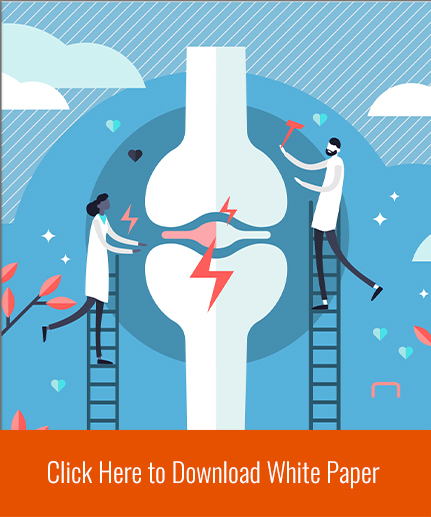Free Case Evaluation

Lawyers Who Understand the Different Types of CRPS
Strong, dedicated representation for CRPS patients
Complex Regional Pain Syndrome (CRPS) is a chronic health disorder. The main characteristic of this condition is pain in an arm, leg, hand, or foot that continues for a long time. Patients are likely to have good days and bad days. Sometimes, the symptoms of CRPS never fully resolve. There are several types of CRPS, which we’ll discuss in more detail below. Type I CRPS involves a health disorder that is not tied to a nerve injury. Type II-CRPS happens after a nerve injury. Although rare, CRPS can spread away from the original damaged area to other parts of your body.
Our CRPS law firm represents accident victims when CRPS is due to an injury, such as a motor vehicle accident or medical malpractice. Our founder, Bryan Pope, has spent 25+ years focusing on personal injury and CRPS lawsuits. He is also the only lawyer who is a Director on the RSDSA Board. The RSDSA is a national advocacy organization for patients with CRPS. Bryan frequently lectures on CRPS/RSD litigation and speaks at RSDSA conferences and legal symposiums. His team stays current on new CRPS research, studies, and treatments to better serve his clients.
What is the main type of CRPS?
According to medical physicians at the Royal College of Physicians (RCP) in the UK, there are specific guidelines for CRPS in adults. Burning Nights (a charity devoted to CRPS awareness and education) provides the following discussion of these guidelines, which include the different types of CRPS.
The RCP guidelines state that CRPS is:
- A painful, chronic, debilitating condition in a limb or extremity. 60 percent of CRPS cases involve the upper limbs and 40 percent involve the lower limbs.
- CRPS symptoms include “sensory, motor, autonomic, skin and bone abnormalities.”
- The harshest symptom is pain, which is usually unbearable.
- CRPS causes (but is not caused by) mental health or psychological problems.
What are the types and subtypes of CRPS?
There are different types and subtypes of CRPS, defined as follows:
- Type 1 or CRPS I. CRPS used to be called Reflex Sympathetic Dystrophy (RSD). Currently, RSD is considered a Type I CRPS. Type 1/CRPS I is generally not due to nerve damage. Common causes include soft tissue damage, broken bones, or sprains that are not nerve-related. According to the Mayo Clinic’s web page for Complex Regional Pain Syndrome, ”About 90 percent of people with complex regional pain syndrome have type 1 CRPS."
- Type 2 or CRPS II. This type of CRPS (formerly called Causalgia) happens due to some type of nerve injury.
- CRPS-NOS. Burning Nights writes that another type of CRPS is CRPS – Not Otherwise Specified (NOS). CRPS‑NOS applies when a person does not fully meet diagnostic criteria (and was not previously documented to have met them).
- CRPS with Remission of Some Features. This is a subtype of CRPS for “those patients who have been previously diagnosed or documented as having fully met the CRPS criteria (either CRPS I or CRPS II) but who are currently not displaying sufficient CRPS symptoms to fully meet the diagnostic criteria.”
What factors help determine your type of CRPS?
There are a few other definitions of CRPS that are diagnostic terms used for CRPS (as opposed to type or subtype definitions). These terms include the following:
- Warm/Hot/Red CRPS. Doctors, including CRPS specialists, use this term to describe “the 'acute' phase of the affected CRPS limb or CRPS area.” A majority of CRPS patients will experience this condition. About 70 percent of the people with this condition have the warm or hot variant as compared to the cold variant.
- For patients with warm CRPS, inflammation is likely to be present.
- Doctors use the term “hot” if there is an early diagnosis of CRPS or the symptoms appear soon after the injuries or surgery.
- “There will usually be a distinct temperature difference between the CRPS-affected limb and the non-affected limb or limbs.”
- In the early stages of CRPS Type I, patients are likely to have a warmer affected limb. When the CRPS becomes chronic, then it’s likely the limb will turn cold.
- Intermediate CRPS. This condition occurs when the CRPS-affected limb or area is neither warm, hot, cold, nor blue.
- Cold or Blue CRPS. This term generally refers to the chronic stage of CRPS. Patients with cold CRPS presentation tend to have “poorer clinical pain outcome and more signs of central sensitisation” compared to those with warm CRPS.
A CRPS Type II diagnosis might be made earlier than a CRPS Type I diagnosis because the condition can be traced to a nerve. One study showed that "…cold CRPS 1 patients have poorer clinical pain outcomes and show persistent signs of central sensitization correlating with disease progression. The latter is not the case for warm CRPS 1 patients."
Who is likely to get CRPS?
Burning Nights states that anyone can develop CRPS. However, it “is generally considered that CRPS rarely occurs in the elderly. Moreover, professionals are now seeing more and more patients between the ages of 20 and 35 years old.” While children under five can develop CRPS, the likelihood of this age group developing CRPS is rare. CRPS among teenagers and children older than five does occur.
How does CRPS start?
Many traumatic events and illnesses can cause CRPS. There’s no complete list. Many of the causes are due to accidents (such as car accidents) that cause the following health disorders:
- Minor injuries
- Nerve damage
- Soft tissue injuries
- Cuts and lacerations
- Spinal cord injuries
- Deep wounds
- Fractures/broken bones
- Strains
- Castings
- Surgery
- Burns
- Neck disorders
Other health disorders that may cause CRPS include cancer, heart disorders, infections, and frostbite.

Mental health and CRPS
Psychological disorders do not cause CRPS. However, coping with CRPS can be quite difficult, causing patients to suffer emotional distress, which may require psychological counseling. CRPS likely develops as “a result of dysfunction in your central or peripheral nervous systems.”
Contact the CRPS Law Firm today
At the CRPS Law Firm, we have extensive experience holding the people and businesses who cause CRPS accountable for the physical and emotional suffering they cause, and all the financial damages (including medical bills and lost income) resulting from their negligence. The CRPS Law Firm can connect with your doctors and our network of doctors to verify your injuries, all the medical care you need, and all the challenges you’ll face.
Please call us or fill out our contact form to schedule a free consultation. We have the experience and resources to provide strong CRPS representation.

